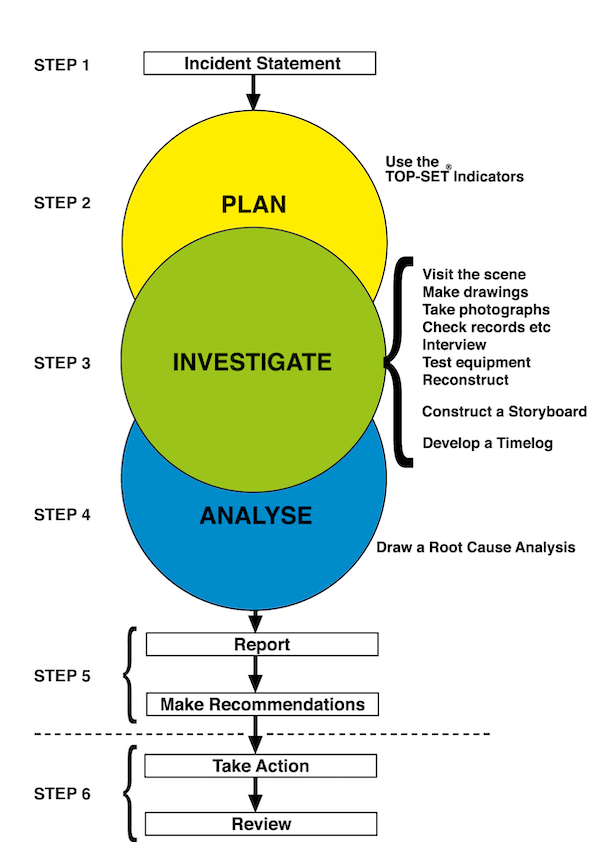The Kelvin TOP-SET Methodology
The TOP-SET incident investigation, problem-solving and root cause analysis method
Generally seen as the most comprehensive yet easy-to-learn, logical and practical incident investigation system, TOP-SET can be used for any type of incident in any industry.
Its easy-to-follow 6-step process structures investigations so that they are much more than just root cause analysis. TOP-SET also ensures a consistent approach to investigating problems at all levels.
The most important part of the Kelvin TOP-SET methodology is that it can help you learn from incidents to prevent them (and similar) from happening again.
To be taken through the TOP-SET process and see the value that incident investigation training could bring to your organisation, please complete the form below and a member of our team will be in touch.
Contact Info
Please don't hesitate to get in touch with any questions, to make a booking enquiry or to arrange for a presentation to learn more, and our team will get back to you shortly.
Head Office
info@kelvintopset.com
USA Office
info@kelvintopset.com

